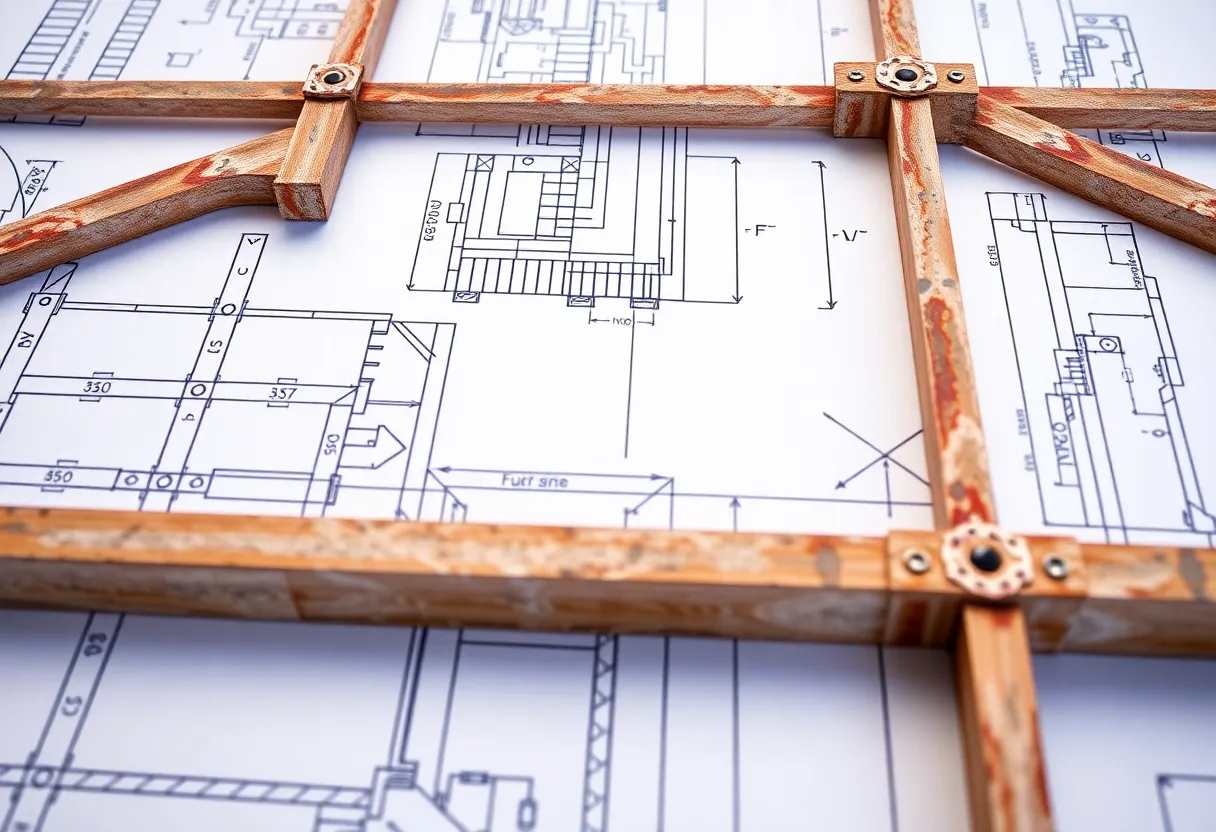Structural Integrity: Lessons Learned from Connection Failures
In the realm of engineering, structural integrity is a fundamental concern. It ensures that structures can perform their intended function without experiencing failure. Connection failures remain one of the primary causes of structural collapse or malfunction. Understanding the intricacies of these failures provides invaluable insights into future design and construction practices. This article delves into the lessons learned from various significant connection failures, helping to shed light on preventing such issues moving forward.
The Importance of Connection Integrity
Connections are critical points in any structure. They are the joints where different components meet and interact. Hence, failure in these areas can compromise the entire structural system. Enhancing connection integrity is vital for the overall strength and functionality of structures. Failure incidents—such as those seen in bridges, buildings, and other infrastructures—underscore the need for thorough analysis and design improvements.
Notable Connection Failures
The Tacoma Narrows Bridge Collapse
One of the most infamous examples is the Tacoma Narrows Bridge, which collapsed in 1940. The bridge became notorious due to its excessive oscillation caused not by a design error, but rather by the aerodynamic inefficiencies of its connections. The failure showcased the need to consider forces acting upon structures in real-world conditions. Its lessons emphasized the importance of rigorous testing and analysis in the design of connections to withstand unpredictable forces.
The Ronan Point Apartment Collapse
In 1968, a gas explosion caused a portion of the Ronan Point apartment building in London to collapse. The failure initiated not only a re-assessment of building connection designs but also led to significant changes in regulations regarding multi-story residential buildings. This incident highlighted the implications of weak connections in a system and showcased the dire consequences of overlooking potential vulnerabilities. Lessons learned resulted in stricter compliance standards in connection design.
The Hyatt Regency Walkway Collapse
Another defining moment in the study of connection failures was the Hyatt Regency Walkway collapse in 1981. The design modifications made during construction weakened the connection points between the walkways and their support system. The subsequent tragedy that claimed 114 lives illustrated the criticality of maintaining integrity during modifications and the need for a stringent review process. It reinforced the importance of communication among engineers, architects, and construction teams.
Causes of Connection Failures
Understanding the common causes of connection failures is essential to enhancing structural integrity. Critical factors include:
Design Flaws
Often, connection failures stem from inherent design flaws. Insufficient load-bearing capacity, inappropriate material selection, and inadequate detailing can lead to failure. Engineers must prioritize comprehensive design assessments to identify potential weaknesses early in the process.
Material Deficiencies
Poor material quality can compromise connections significantly. Insufficient grades or improperly treated materials can lead to unforeseen failures. Close collaboration with suppliers and adherence to quality standards are key mitigative practices to enhance material integrity.
Construction Errors
Misalignment during construction or the use of incorrect installation techniques can lead to connection failures. Education and training of the workforce are paramount to ensuring that construction practices conform to the stipulated design criteria.
Environmental Factors
External forces such as wind, earthquakes, or thermal expansion can adversely affect connection points. Engineering practices must include evaluations of environmental conditions specific to the structure’s location. Adequate reinforcement strategies should be designed to counteract these forces.
Lessons Learned from Connection Failures
Enhanced Design Practices
The lessons drawn from connection failures have led to significant advancements in design practices. Engineers are now more inclined to perform in-depth simulations and stress testing to better understand potential vulnerabilities. Emphasizing redundancy—additional connections or supports—ensures that if one connection fails, the overall structure can remain intact.
Stricter Regulatory Frameworks
In response to major failures, governments and institutions have instituted stricter regulations. Mandatory code compliance and regular safety inspections have become standard practice. These regulations help ensure that structures uphold a baseline of integrity and safety.
Interdisciplinary Collaboration
Modern engineering emphasizes cooperation among various disciplines. Architects, structural engineers, and construction teams must communicate effectively throughout the project’s lifecycle. This integrated approach minimizes mistakes and enhances the workflow, ensuring enhanced connection integrity.
Focus on Continuous Learning
The engineering field must prioritize continuous education regarding connection integrity. This involves staying updated with the latest materials, design methodologies, and connection techniques. Professional development opportunities and workshops promote a culture of ongoing learning and adaptation.
Future Trends in Connection Design
The world of engineering is rapidly evolving, with innovative solutions emerging to address traditional connection challenges. Key trends include:
The Use of Advanced Materials
As technology evolves, new materials are being researched that offer superior properties. Materials such as fiber-reinforced polymers or advanced alloys can significantly improve connection strength and resilience. Their adoption is paving the way for more dynamic and robust structures.
Smart Structural Systems
The integration of technology into construction is leading to the rise of smart structural systems. Sensors embedded in connection points can monitor real-time integrity and alert engineers to potential issues before they become severe. This proactive approach improves maintenance and allows for timely intervention.
Sustainable Design Considerations
Sustainability is becoming increasingly significant in construction practices. Future connection designs will focus on energy efficiency and eco-friendliness. Emphasizing materials with lower environmental footprints while maintaining or improving structural integrity is crucial.
Conclusion
Structural integrity is a foundational aspect of engineering that hinges on the robustness of connections. The lessons learned from past connection failures serve as a guide for future improvements. By analyzing historical failures and emphasizing collaboration, innovation, and education, the engineering community can enhance connection design standards, ensuring safer and more reliable structures. Looking ahead, adopting advanced materials and smart technology will pave the way for more resilient infrastructures, reflecting the importance of continuous learning from the past.
Author: STAFF HERE HILTON HEAD
The HILTON HEAD STAFF WRITER represents the experienced team at HEREHiltonHead.com, your go-to source for actionable local news and information in Hilton Head Island, Beaufort County, and beyond. Specializing in "news you can use," we cover essential topics like product reviews for personal and business needs, local business directories, politics, real estate trends, neighborhood insights, and state news affecting the area—with deep expertise drawn from years of dedicated reporting and strong community input, including local press releases and business updates. We deliver top reporting on high-value events such as the RBC Heritage golf tournament, Hilton Head Island Wine & Food Festival, and the Gullah Celebration. Our coverage extends to key organizations like the Hilton Head Island-Bluffton Chamber of Commerce and Community Foundation of the Lowcountry, plus leading businesses in tourism and hospitality that power the local economy such as Sea Pines Resort and Sonesta Resort Hilton Head Island. As part of the broader HERE network, including HEREAiken.com, HEREBeaufort.com, HEREChapin.com, HERECharleston.com, HEREClinton.com, HEREColumbia.com, HEREGeorgetown.com, HEREGreenwood.com, HEREGreenville.com, HEREHiltonHead.com, HEREIrmo.com, HEREMyrtleBeach.com, HERENewberry.com, HERERockHill.com, and HERESpartanburg.com, we provide comprehensive, credible insights into South Carolina's dynamic landscape.







